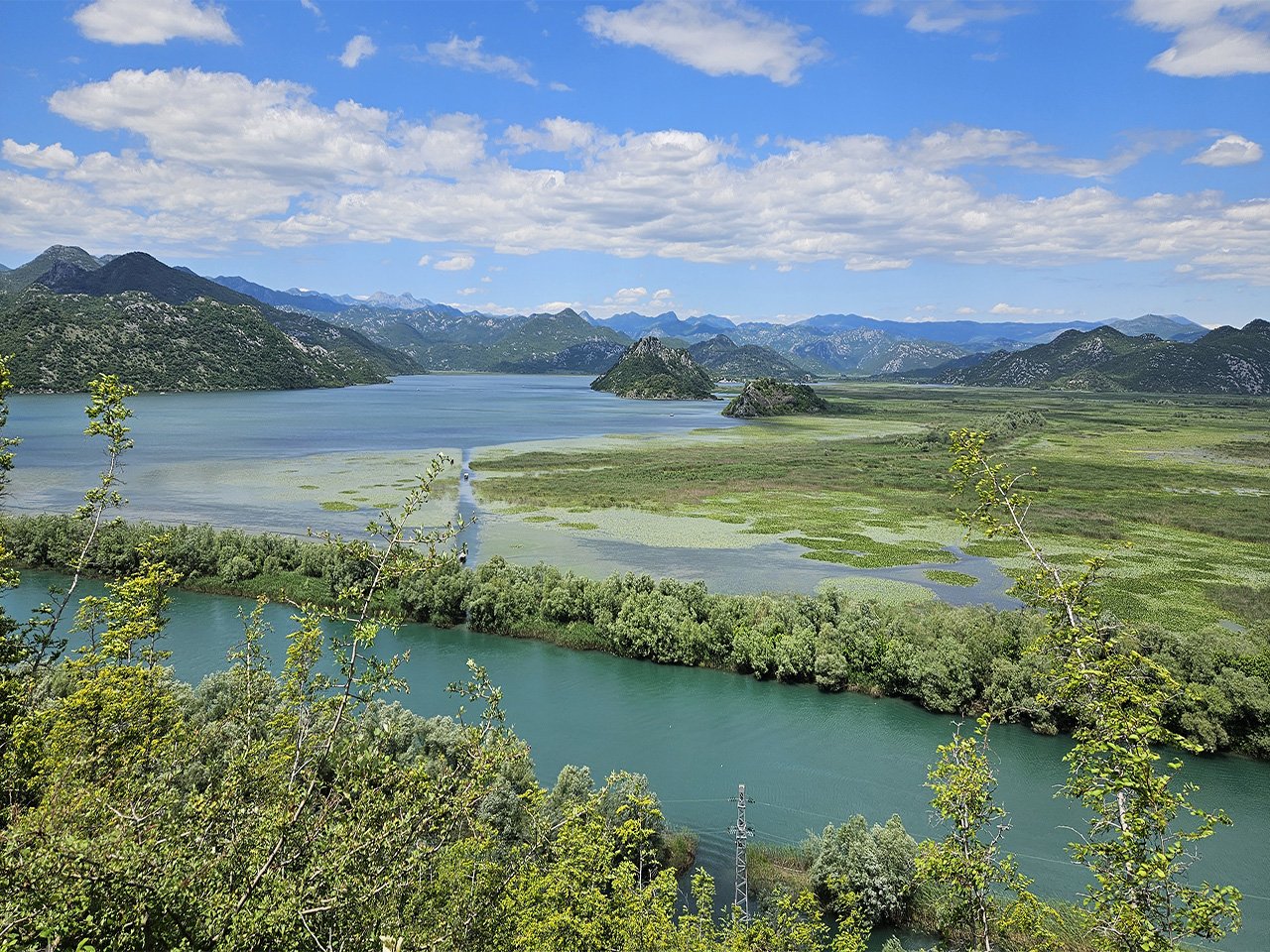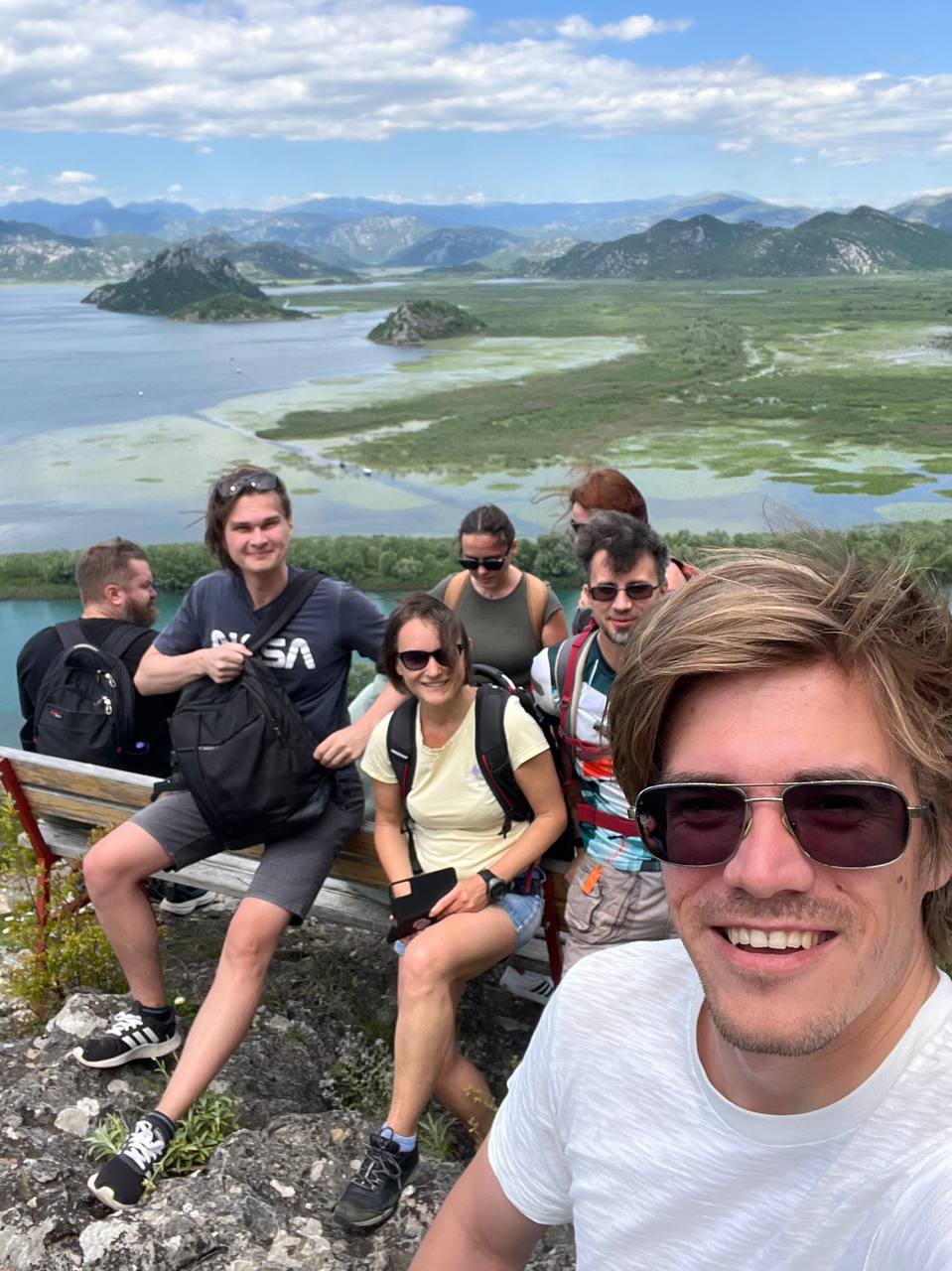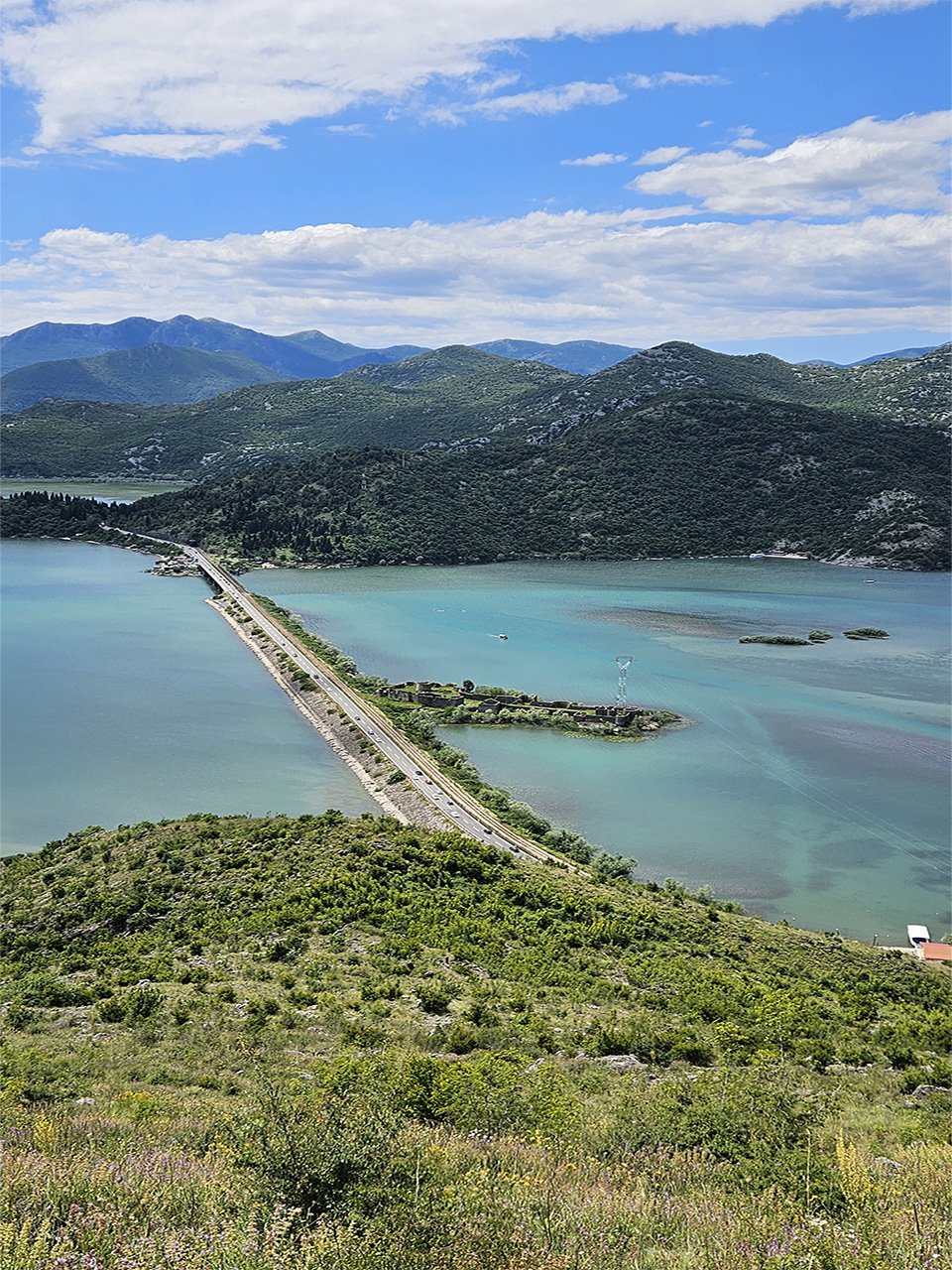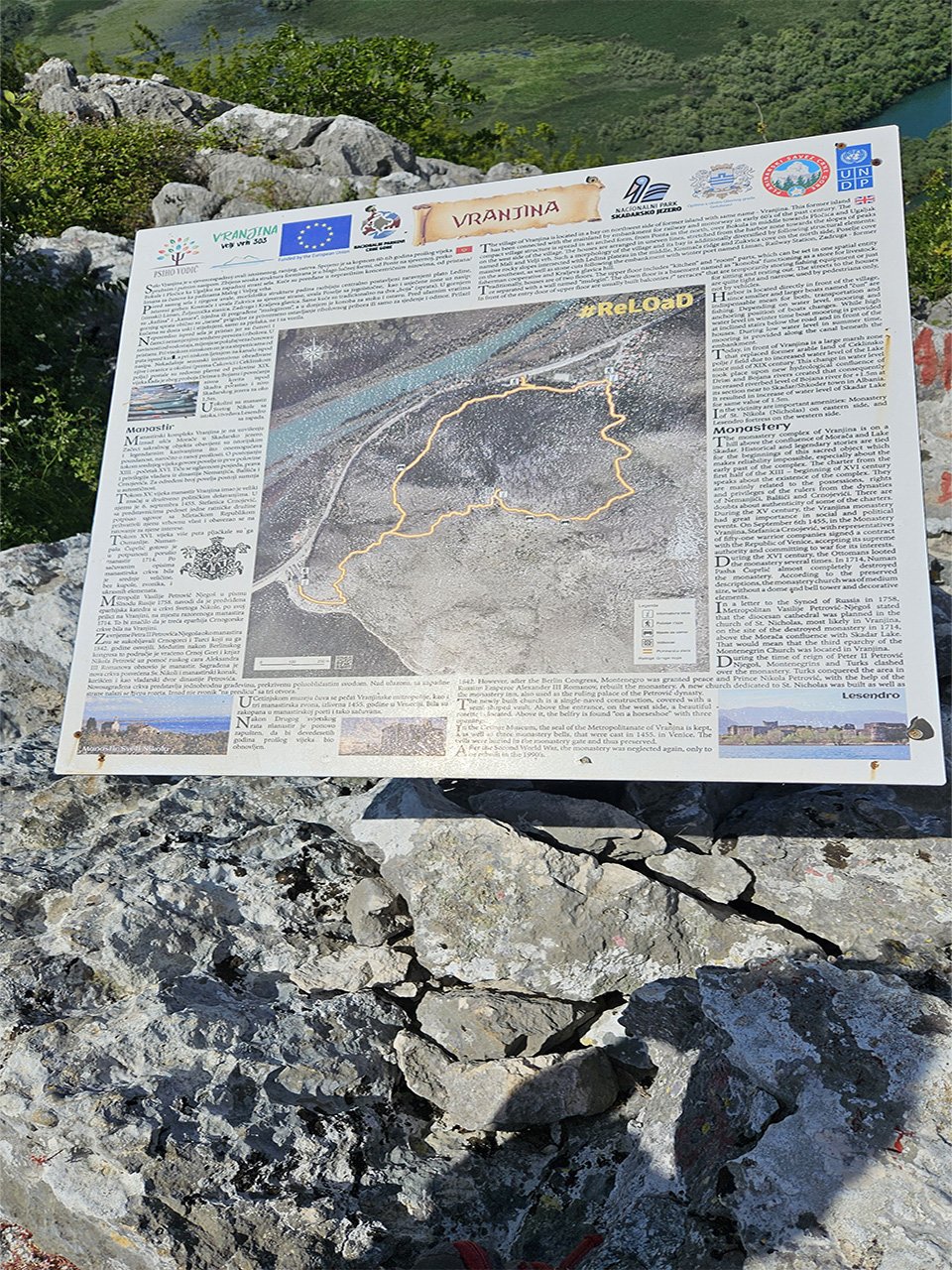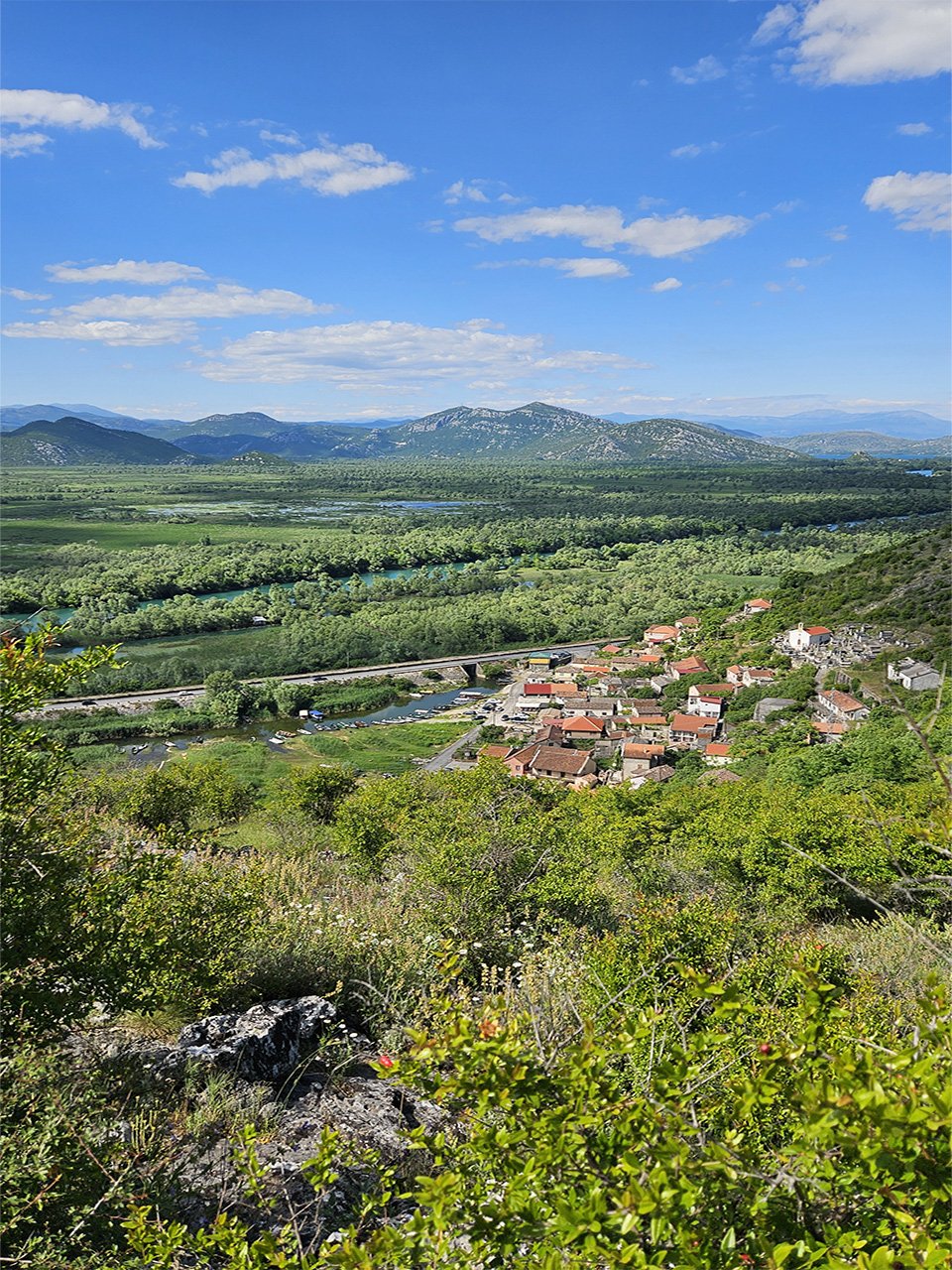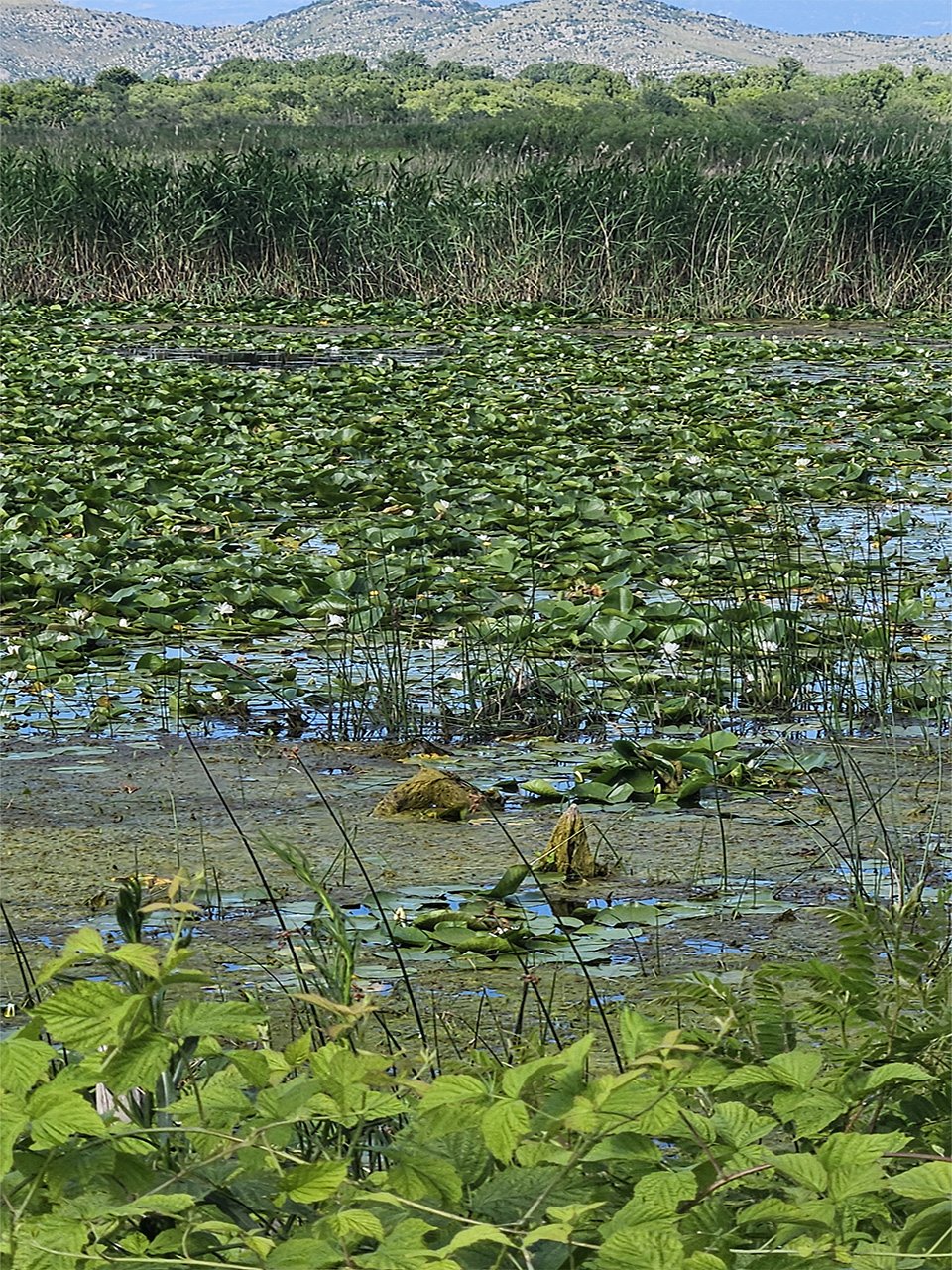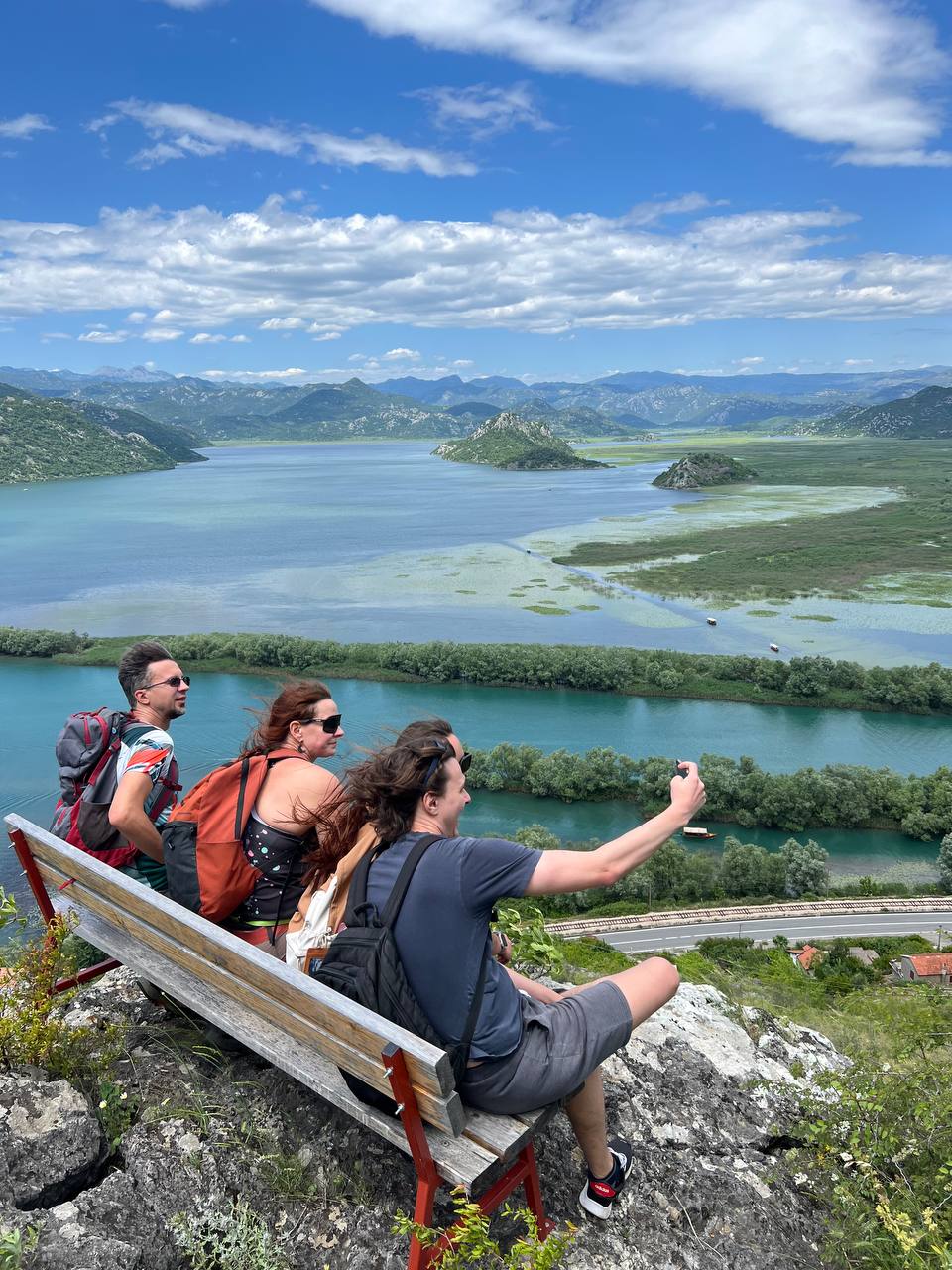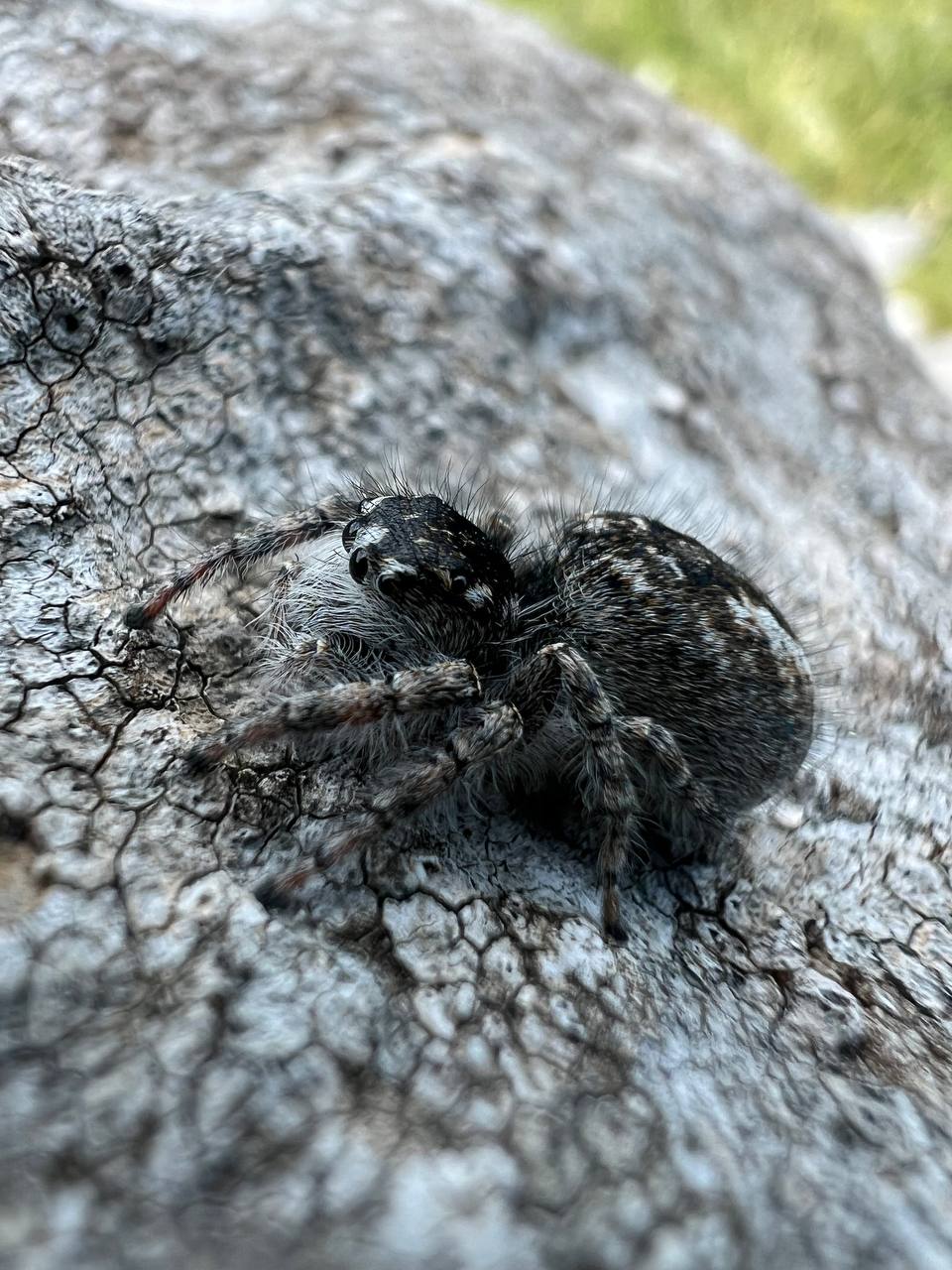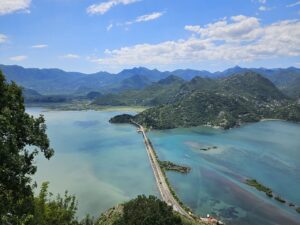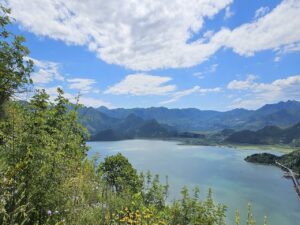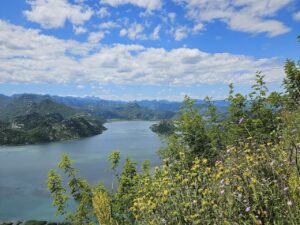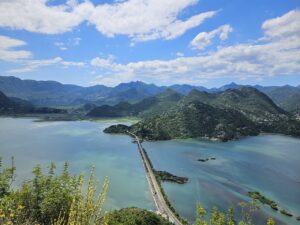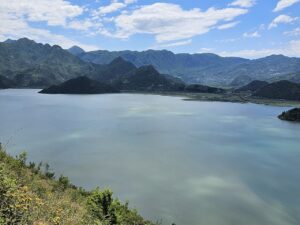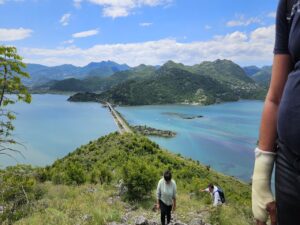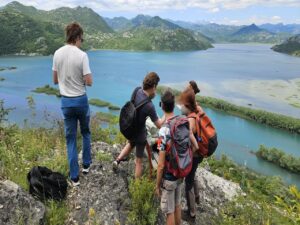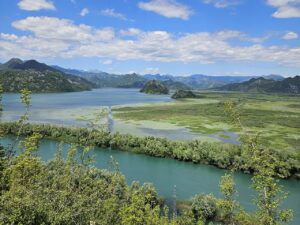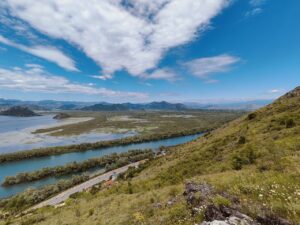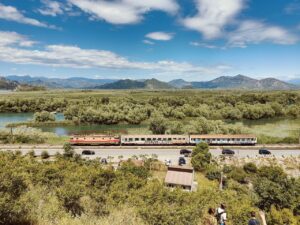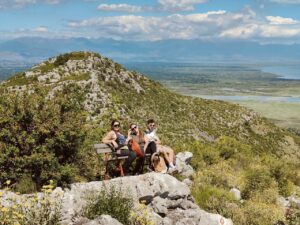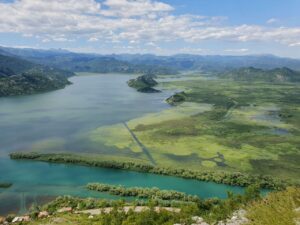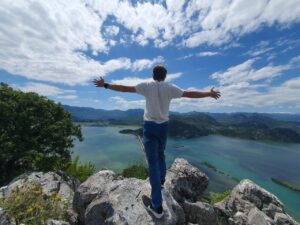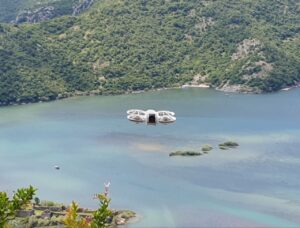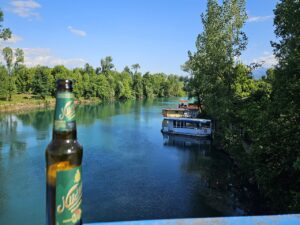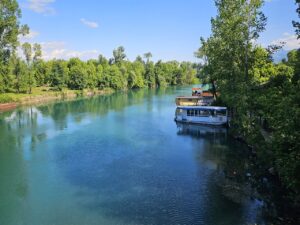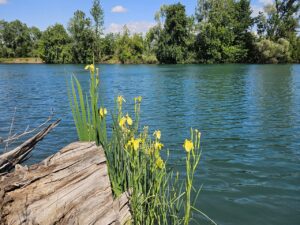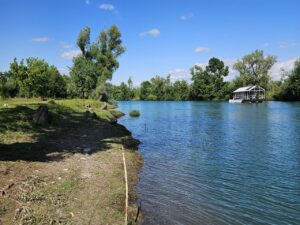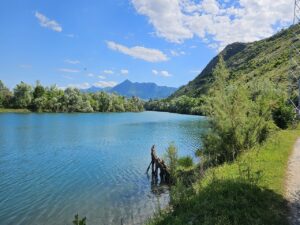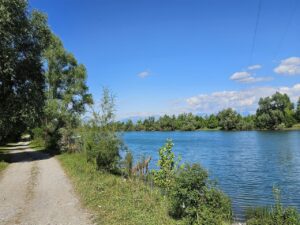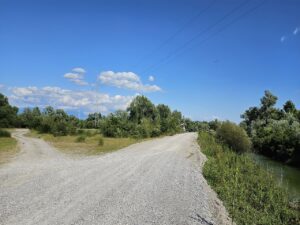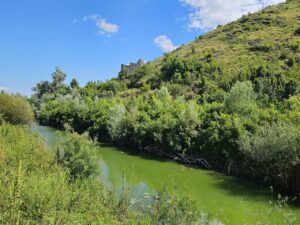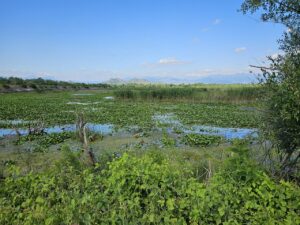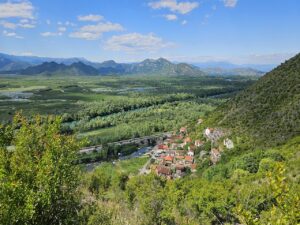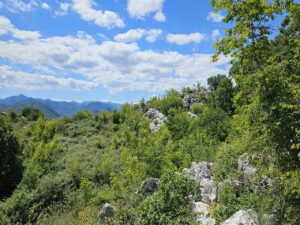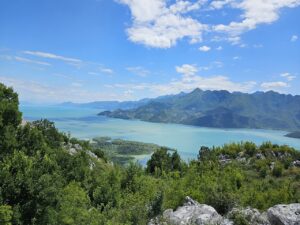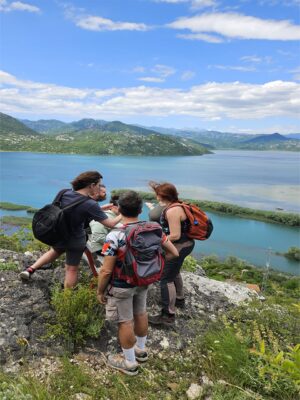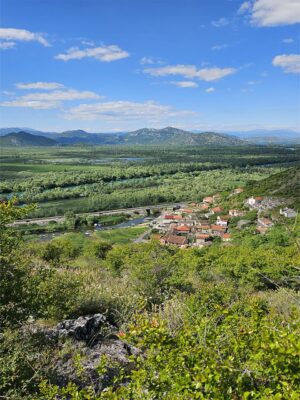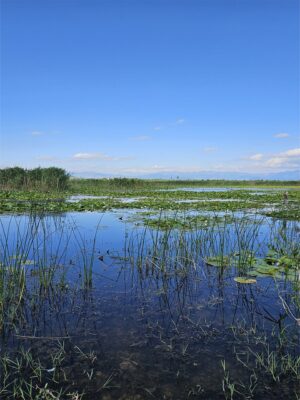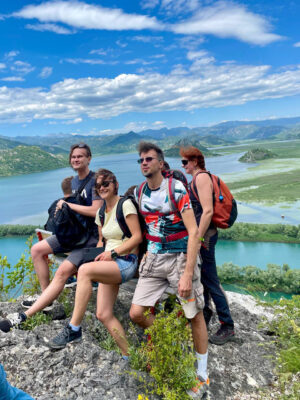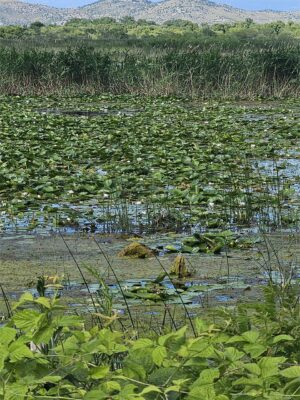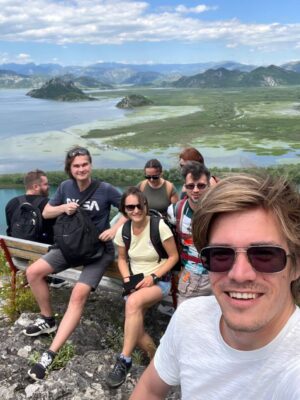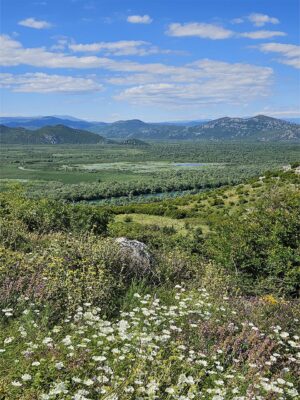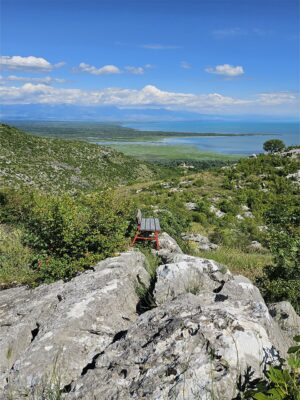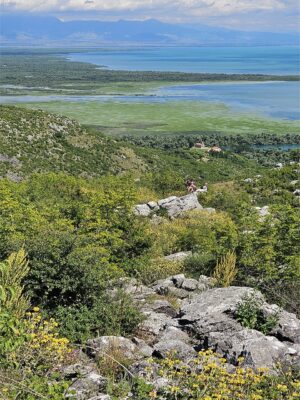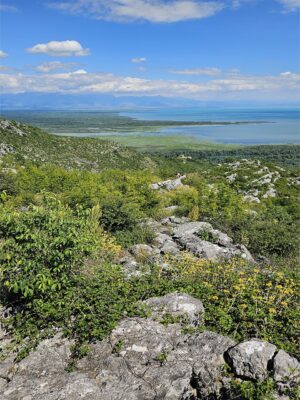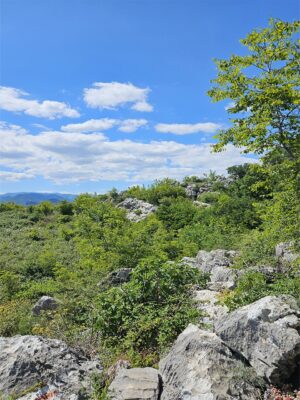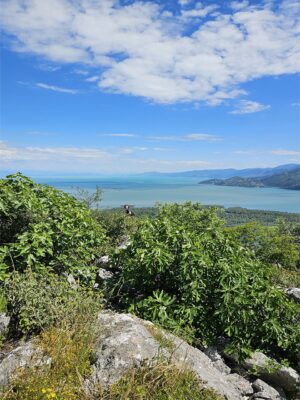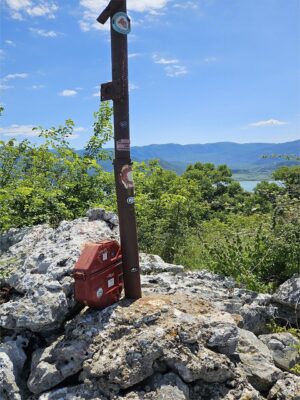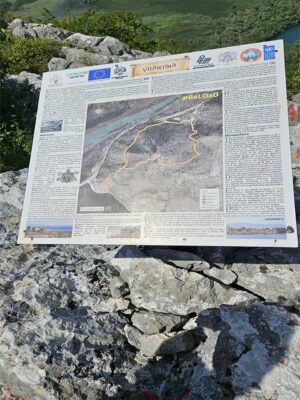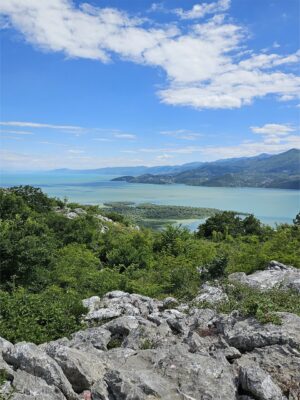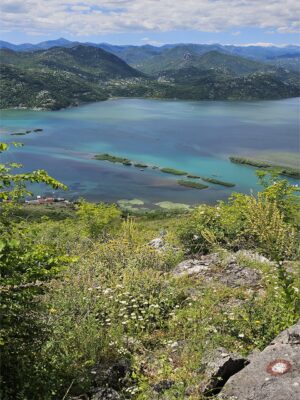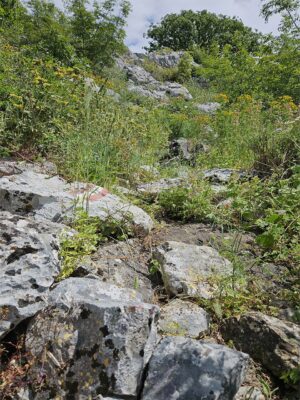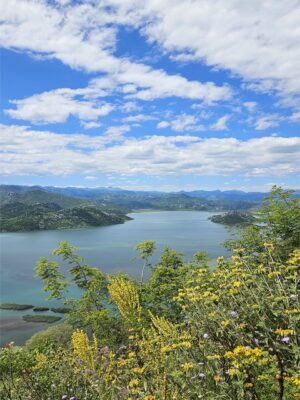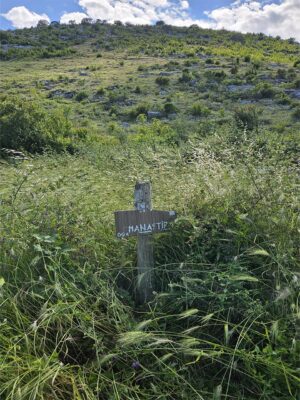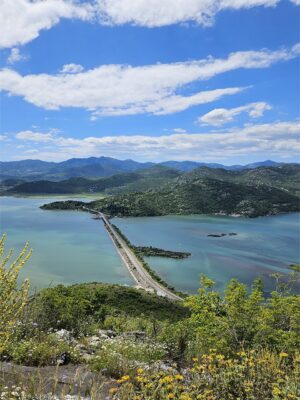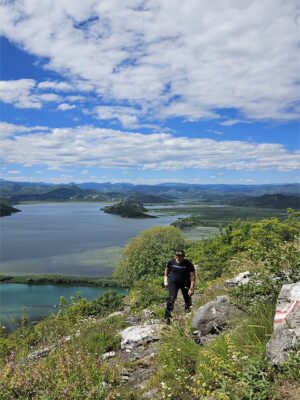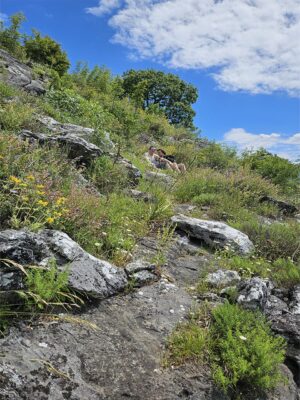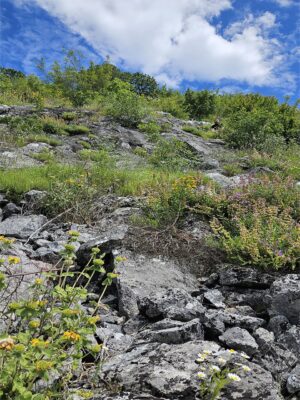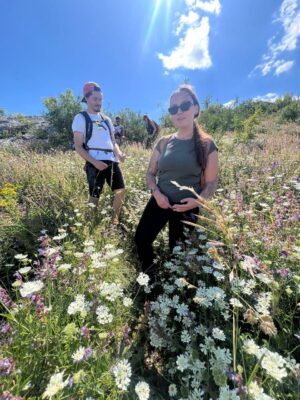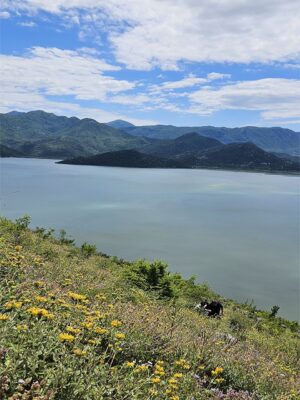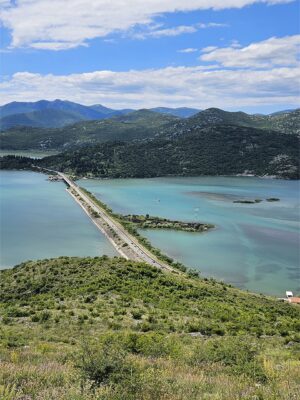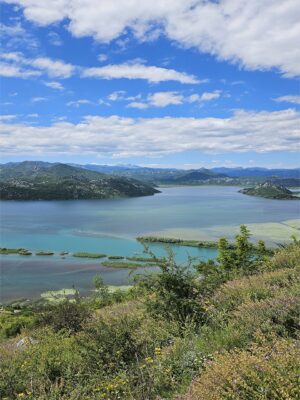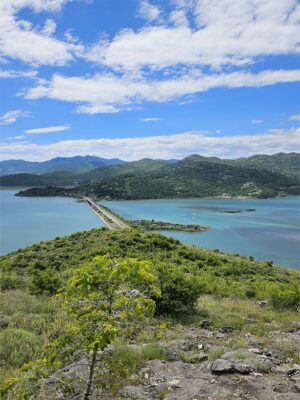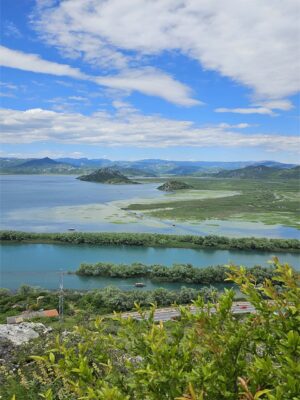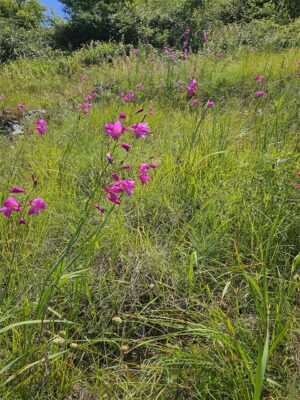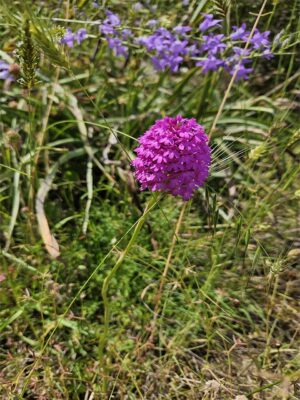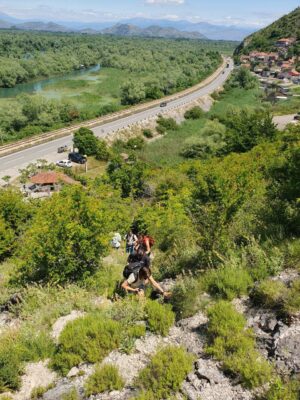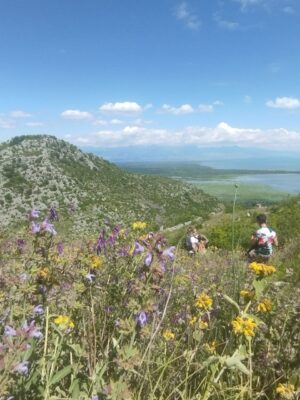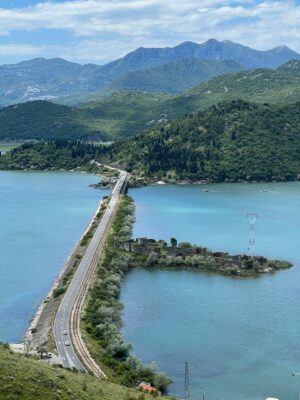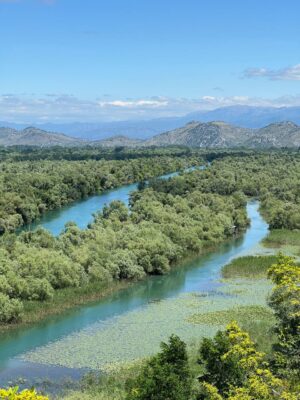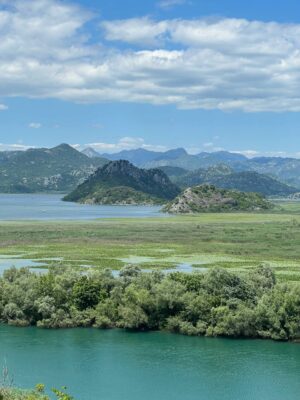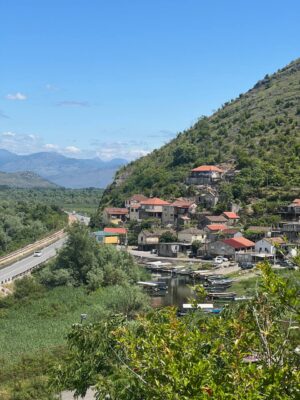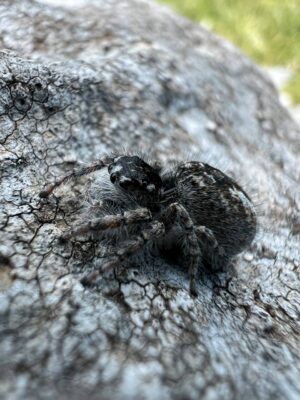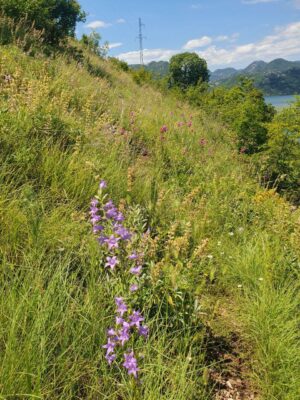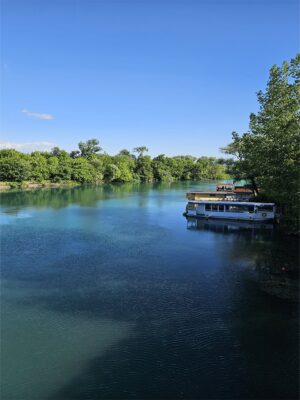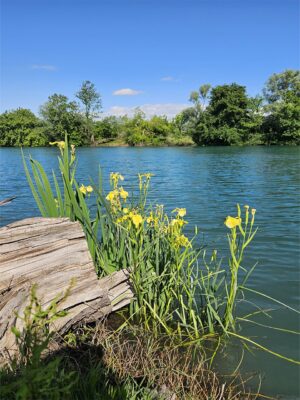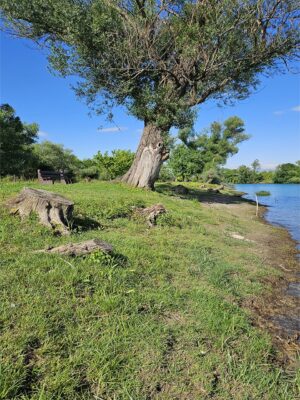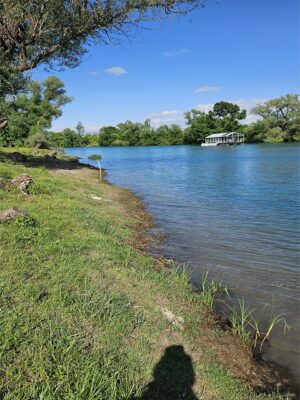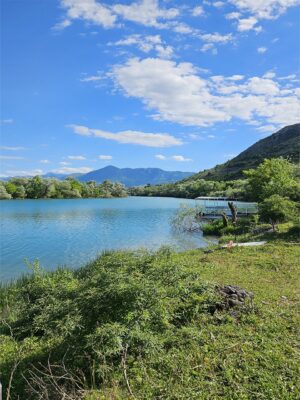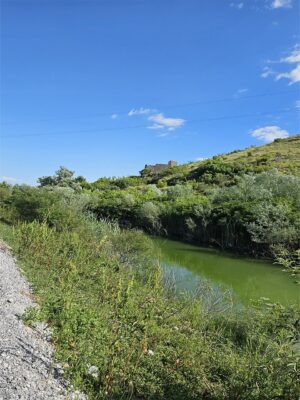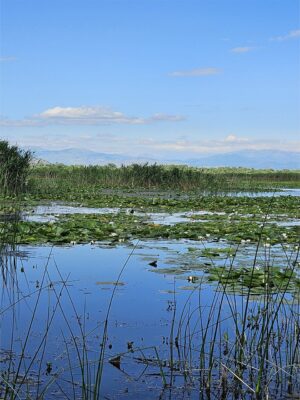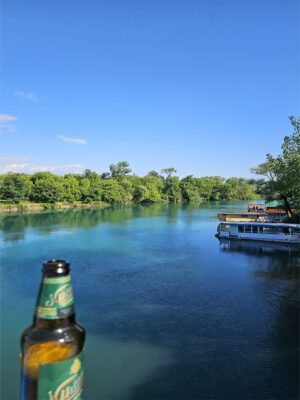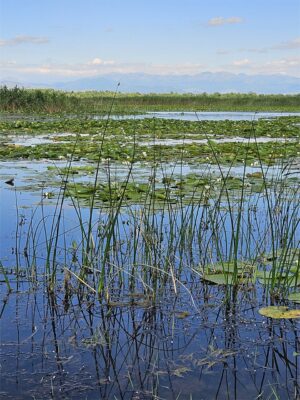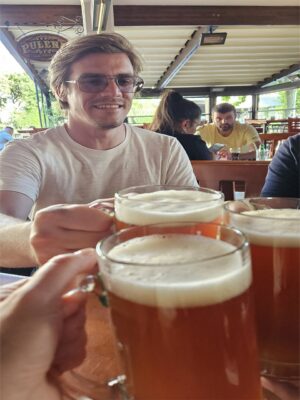This article is intended to be a detailed report on the hike of the Starlight group along one of the most picturesque and historically rich routes in the Skadar Lake National Park in Montenegro. We walked along the island of Vranjina, climbed to its peak Velji Vrh, saw the ancient monastery only from above and walked along the Moraca River. Climbing the slope of Vranjina, our attention was drawn to the formidable witness of history – Lesendro Fortress.
Skadar Lake National Park – Pearl of the Balkans
Geography and Hydrology: Lake Skadar (Skadarsko jezero / Skadarsko jezero) is the largest lake on the Balkan Peninsula, located on the border of Montenegro and Albania. Two thirds of the lake belong to Montenegro and have had the status of a National Park since 1983. The area of the lake varies from 370 to 530 square kilometers, depending on the season and the water level, which is mainly fed by the Moraca River and numerous karst springs (subaquatic springs called “oko”). The depth of the lake also varies, on average 5-8 meters, but in some “okas” it reaches 60 meters. Biodiversity: Lake Skadar is one of the most important ornithological sites in Europe. It is home to more than 280 species of birds, including the rare Dalmatian Pelican (Pelecanus crispus), which is the symbol of the park, as well as the little cormorant, various species of herons, ducks and other waterfowl. The lake is rich in fish (carp, bleak, eel, etc.), amphibians and reptiles. Cultural and historical heritage: The shores of the lake and its numerous islands (gorica) are dotted with medieval monasteries, churches, ruins of fortresses and traditional fishing villages, testifying to the rich history of the region, connected with the dynasties of Vojislavljević, Balšić, Črnojević and the Ottoman period.
Lesendro Fortress (Tvrđava Lesendro)
Before reaching the island of Vranjina, following the road or railway that crosses the lake, it is impossible not to notice the ruins of the Lesendro Fortress. It is located on a small island of the same name (now a peninsula connected to a dam) not far from Vranjina.
The fortress was built in 1843 by order of the Montenegrin ruler Petar II Petrović-Njegoš. Its main purpose was to provide protection from Ottoman raids, control trade routes on the lake and strengthen the Montenegrin presence in this strategically important part of Lake Skadar.
However, in the same year 1843, just a few months after its construction, Lesendro was captured by the troops of the Ottoman vizier Osman Pasha Skopljak. This loss was a great tragedy for Njegoš and all of Montenegro. The ruler repeatedly tried to recapture the fortress, but to no avail. His bitter phrase is well known: “Izgubih Lesendro, moju desnu ruko” (“I have lost Lesendro, my right hand”) or a variation “Propade mi Lesendro ka vladicina stolitsa” (“My Lesendro is lost, like a bishop’s throne”).
The fortress remained under Ottoman control for 35 years, serving as an important Turkish outpost. The Turks fortified it and used it to control the northern part of the lake.
Montenegro was able to recapture Lesendro only in 1878, following the Berlin Congress, which recognized the independence of Montenegro and defined its new borders. Architecture and current state:
The fortress had a rectangular shape with towers at the corners. Today, impressive ruins of walls and towers remain, clearly visible from the Podgorica-Bar road and the railway bridge.
Access to the fortress itself can be somewhat difficult and not always formalized, but many tourists and locals approach it along the embankment.
Meaning: Lesendro is not just ruins, but a powerful symbol of Montenegrin history, the struggle for independence and the strategic importance of Lake Skadar. Its appearance recalls the complex relationship between Montenegro and the Ottoman Empire and the personal drama of the great poet and ruler Petar II Petrovic-Njegos.
Start point: Vranjina
Vranjina was once the largest island on Lake Skadar, now connected to the mainland by an embankment and a bridge that pass right by Lesendro. This picturesque fishing village is known for its authentic atmosphere. Vranjina had a strategic importance. In the 19th century, after the capture of Lesendro, the Turks also fortified Vranjina by building fortifications here. Montenegrins called the Turkish fortress on Vranjina “Montenegrin Alcatraz” due to its use as a prison.
Climbing Velji Vrh
From the island of Vranjina, a trail starts leading to its highest point – Velji Vrh (translated as “Big Peak”), which is about 303 meters above sea level.
- Trail: The route is well marked. The trail is rocky, passes through typical Mediterranean maquis (dense thickets of evergreen shrubs). The climb is of moderate difficulty, requires good physical fitness and comfortable trekking shoes. Duration of the climb is about 1-1.5 hours.
- Panoramic views: From the top of Velja Vrh, there is a breathtaking 360-degree panorama:
o The vast expanse of Lake Skadar with its islands and bays, including a view of Lesendro from above.
o The Rumija mountain range to the southeast.
o The Prokletije Mountains to the east (in clear weather).
o The Moraca River Delta.
o The surrounding coastal villages.
- What to consider: In hot weather, the climb can be tiring. It is best to start early in the morning. Be sure to bring enough water, a hat and sunscreen.
Vranjina Monastery (Manastir Vranjina)
The Monastery of St. Nicholas, also known as the Vranjina Monastery, is located on the northeastern slope of the island. We got a view of the monastery on our way back to the village. We did not have time to explore the monastery itself. In addition, according to available information, the monastery is accessible only by water.
- History of the monastery:
o Founded in 1221-1223 by Saint Sava, the first archbishop of the Serbian Orthodox Church, during the reign of the Nemanjić dynasty. According to other sources, the founder is considered to be Hilarion, Bishop of Zeta, in 1233.
o Was an important spiritual and cultural center of Zeta. Books were copied here, educational activities were carried out.
o In the 15th century, during the reign of the Balšić and Črnojević dynasties, the monastery played a significant role. Jelena Balšić, the daughter of Prince Lazar, spent time here and contributed to its development.
o Repeatedly destroyed and rebuilt. In 1478 it was destroyed by the Turks.
o In 1843, after the capture of Lesendro, Osman Pasha Skopljak built a military fortification on Vranjina on the ruins of the monastery. o Rebuilt in 1886 by Prince Nikola I Petrović-Njegoš. The church was dedicated to Saint Nicholas.
o The monastery acquired its current appearance after reconstruction.
- Architecture: Modest but spiritual. Stone church, cells. Atmosphere of peace and quiet.
To the Moraca River Delta (Rijeka Morača)
After descending the mountain, we reached the northern part of Vranjina Island, from where a view opens up of the mouth of the Moraca River into Lake Skadar.
- Moraca River: The largest river flowing into Lake Skadar, it provides about 60% of its water inflow. The river carries with it a large amount of sediment, forming a vast delta.
- Moraca Delta: This is a unique ecosystem, rich in wetlands, floodplains, reed beds. An ideal place for nesting and feeding for many species of birds.
- Bird watching: Here you can see herons, cormorants, ducks, seagulls and maybe even pelicans if you are lucky. Binoculars will come in handy.
- Landscape: The contrast between the wide riverbed, the green islands of the delta and the water surface of the lake creates picturesque scenes.
- End of the route: The route is circular, ending in the village of Vranjina.
Flora and Fauna of the Skadar Lake Region
The flora of Lake Skadar is extremely diverse due to the combination of Mediterranean and subcontinental climate, as well as a large number of water and wetland areas.
- Aquatic vegetation: Water lilies (white and yellow), pondweed, hornwort, water chestnut (chilim), dense thickets of reeds and rushes.
- Coastal vegetation: Willow, poplar, alder.
- Macquis and garigue (on slopes, like on Velji Vrh): Evergreen oaks (holm oak, downy oak), juniper, thornbush (Paliurus spina-christi), hornbeam, smoke tree (Cotinus coggygria) – its leaves turn bright red and orange in autumn.
- Aromatic herbs: Sage, rosemary, St. John’s wort, oregano.
What blooms in late May – early June:
This period is one of the most beautiful on Lake Skadar, when nature is in full bloom.
- White water lily (Nymphaea alba) and yellow water lily (Nuphar lutea): The water surface is covered with their large flowers.
- Irises (Iris pseudacorus, Iris graminea): The yellow marsh iris blooms abundantly along the banks and in damp meadows. Other irises may be found on drier slopes.
- Pomegranate (Punica granatum): The pomegranate’s bright red, flaming flowers are common in gardens and wildflowers.
- Cotinus coggygria: Although its main ornamental feature is its autumn foliage, it produces airy, smoky clusters in spring.
- Gorse (Genista spp.): Numerous species of gorse have bright yellow flowers.
- Rose hips (Rosa canina and other species): Delicate pink or white, fragrant flowers.
- Meadow grasses: Bluebells, carnations, buttercups, clover, orchids (including rare species such as orchis).
- Capers (Capparis spinosa): Beautiful white flowers with pink stamens, often growing on old walls and rocks.
- Tamarisk (Tamarix spp.): Pink or whitish panicles of flowers on shrubs along the water.
Fauna:
- Birds: The main wealth of the lake.
o Dalmatian Pelican (Pelecanus crispus): The symbol of the park, nests on floating islands of reeds.
o Pygmy Cormorant (Microcarbo pygmeus): One of the largest colonies in the world.
o Great Cormorant (Phalacrocorax carbo).
o Herons: Grey, Red, Great White, Little Egret, Night Heron.
o Ducks: Mallard, Teal, Shoveler ka, etc.
o Coot (Fulica atra), Common Moorhen (Gallinula chloropus).
o Birds of Prey: Marsh Harrier, White-tailed Eagle (less common).
- Fish: About 50 species. The most famous are carp, bleak (a popular local snack is dried bleak), roach, eel, and catfish.
- Amphibians and Reptiles:
o Skadar Lake Frog (Pelophylax shqipericus).
o Numerous species of snakes (water snake, Aesculapian snake, Balkan lizard snake – non-venomous; long-nosed viper – venomous, but less common in such places and tries to avoid people).
o Lizards: wall lizard, green lizard, Balkan green lizard.
o Turtles: European pond turtle.
- Mammals: Otter (Lutra lutra) is a secretive inhabitant, but its tracks can be found. Wild boar, fox, hare, various rodents.
- Insects: A huge variety, especially dragonflies, butterflies, beetles. In late May – early June, mosquitoes can be active, especially in the evening near the water.
Conclusion
A hike along the route Vranjina – Velji Vrh – Vranjina Monastery – Moraca Delta, with a preliminary acquaintance or at least an overview of the Lesendro fortress, is a unique opportunity to touch the natural beauty, rich history and spirituality of Lake Skadar. The Starlight group received unforgettable impressions from panoramic views, encounters with rare birds and acquaintance with the blooming nature of this amazing corner of Montenegro. The main thing is to prepare properly and set off with an open heart and curiosity.

